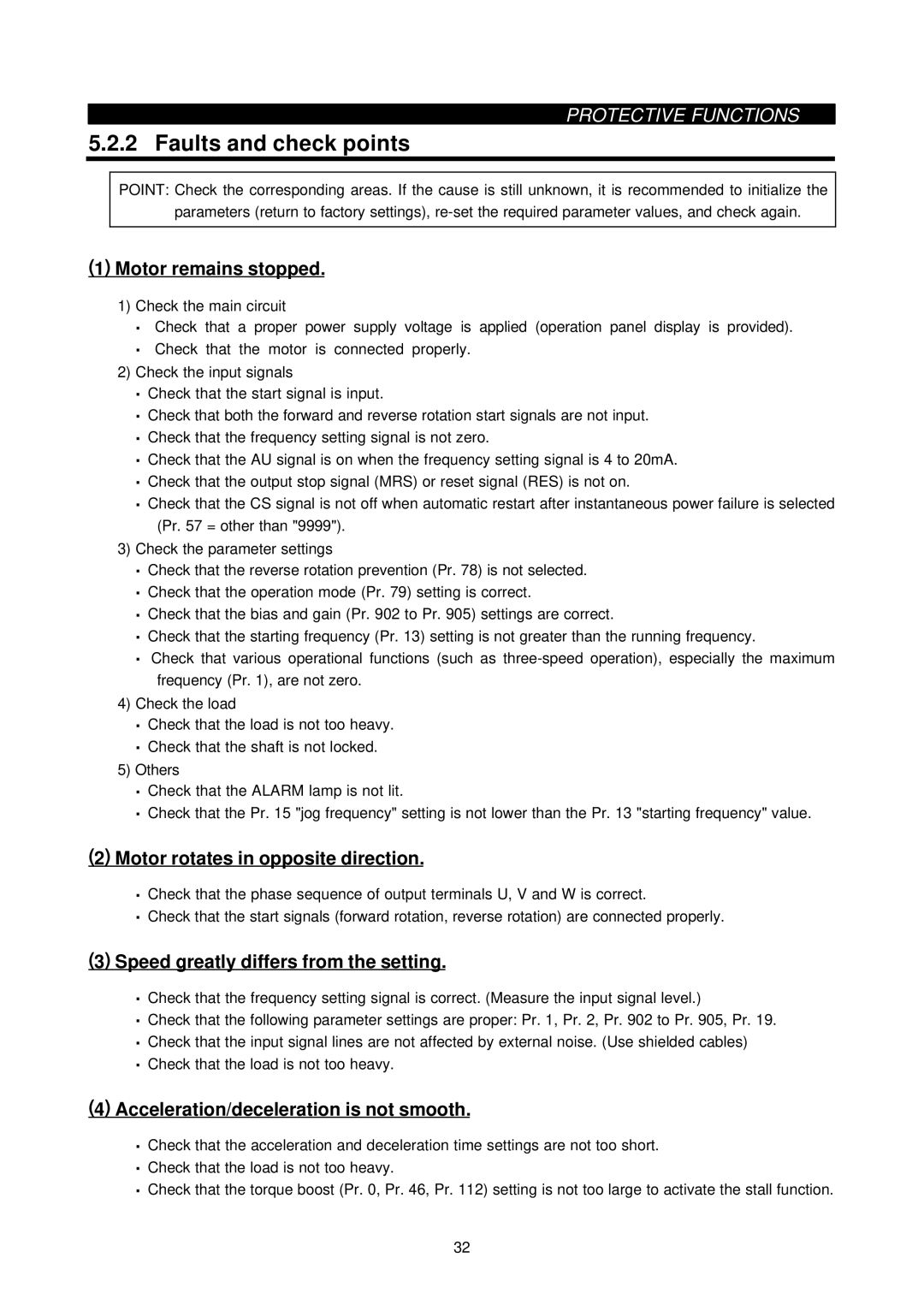
PROTECTIVE FUNCTIONS
5.2.2 Faults and check points
POINT: Check the corresponding areas. If the cause is still unknown, it is recommended to initialize the parameters (return to factory settings),
(1) Motor remains stopped.
1)Check the main circuit
·Check that a proper power supply voltage is applied (operation panel display is provided).
·Check that the motor is connected properly.
2)Check the input signals
·Check that the start signal is input.
·Check that both the forward and reverse rotation start signals are not input.
·Check that the frequency setting signal is not zero.
·Check that the AU signal is on when the frequency setting signal is 4 to 20mA.
·Check that the output stop signal (MRS) or reset signal (RES) is not on.
·Check that the CS signal is not off when automatic restart after instantaneous power failure is selected (Pr. 57 = other than "9999").
3)Check the parameter settings
·Check that the reverse rotation prevention (Pr. 78) is not selected.
·Check that the operation mode (Pr. 79) setting is correct.
·Check that the bias and gain (Pr. 902 to Pr. 905) settings are correct.
·Check that the starting frequency (Pr. 13) setting is not greater than the running frequency.
·Check that various operational functions (such as
4)Check the load
·Check that the load is not too heavy.
·Check that the shaft is not locked.
5)Others
·Check that the ALARM lamp is not lit.
·Check that the Pr. 15 "jog frequency" setting is not lower than the Pr. 13 "starting frequency" value.
(2) Motor rotates in opposite direction.
·Check that the phase sequence of output terminals U, V and W is correct.
·Check that the start signals (forward rotation, reverse rotation) are connected properly.
(3) Speed greatly differs from the setting.
·Check that the frequency setting signal is correct. (Measure the input signal level.)
·Check that the following parameter settings are proper: Pr. 1, Pr. 2, Pr. 902 to Pr. 905, Pr. 19.
·Check that the input signal lines are not affected by external noise. (Use shielded cables)
·Check that the load is not too heavy.
(4) Acceleration/deceleration is not smooth.
·Check that the acceleration and deceleration time settings are not too short.
·Check that the load is not too heavy.
·Check that the torque boost (Pr. 0, Pr. 46, Pr. 112) setting is not too large to activate the stall function.
32
